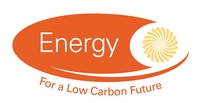Offshore Wind Floating System Demonstrator - Request for Proposal
Abstract:
This project draws upon earlier ETI studies. These showed that floating foundations could be very attractive, by allowing the UK to access higher wind sites that are reasonably close to shore. Our analysis suggests that floating offshore wind has the medium to long term potential to deliver attractive energy costs. The Glosten Associates, a US-based navel architecture and marine engineering firm have designed a tension leg platform (TLP) floating system demonstrator through a Front End Engineering Design (FEED) Study.
The aim of the Project is to accelerate the market introduction of floating foundations for offshore wind farms and break down the barriers to their deployment. The required outcome of the Project is the manufacture and testing of a floating foundation that is integrated with an existing state of the art wind turbine at full size, rather than demonstration solely of manufacturing technology or a floating concept at smaller scale. The ETI recognises that different Respondents will propose different technologies and different project approaches.
The outcomes for this floating system demonstrator Project are to:
- Design, construct and install a floating system demonstrator by late 2015 / early 2016 (using an existing installation vessel at a near shore and high wind (up to around 10 m/s) site with water depth between 60-100m and a tidal range and wave profile typical of the UK West coast;
- Operate the system for a period of at least two years (to the end of 2017) to:
- Demonstrate that the system can operate with high yield and be maintained without the need for ETI to support the construction of a new installation vessel;
- Verify the system technical and economic performance predicted by the system models developed at the design stage;
- Pull forward commercialisation of the enabling technologies to deploy the abundant near shore, 60-100m water depth, and high wind speed resources in the UK by at least 3 years;
- Operate the system for up to a further 8 years, to provide a platform for further developments and revenue from electricity generation
Publication Year:
2015
Publisher:
ETI
Author(s):
ETI
Energy Category
Language:
English
File Type:
application/pdf
File Size:
326791 B
Rights:
Energy Technologies Institute Open Licence for Materials
Rights Overview:
The Energy Technologies Institute is making this document available to use under the Energy Technologies Institute Open Licence for Materials. Please refer to the Energy Technologies Institute website for the terms and conditions of this licence. The Information is licensed "as is" and the Energy Technologies Institute excludes all representations, warranties, obligations and liabilities in relation to the Information to the maximum extent permitted by law. The Energy Technologies Institute is not liable for any errors or omissions in the Information and shall not be liable for any loss, injury or damage of any kind caused by its use. This exclusion of liability includes, but is not limited to, any direct, indirect, special, incidental, consequential, punitive, or exemplary damages in each case such as loss of revenue, data, anticipated profits, and lost business. The Energy Technologies Institute does not guarantee the continued supply of the Information. Notwithstanding any statement to the contrary contained on the face of this document, the Energy Technologies Institute confirms that it has the right to publish this document.
Further information:
N/A
Region:
United Kingdom
Related Dataset(s):
No related datasets
Related Project(s):
Related Publications(s):
10 years of innovation - Offshore Wind Project Timeline 2007 - 2017
An ETI Perspective - Lessons learnt from UK offshore renewables innovation
Floating Foundations for Offshore Wind - Presentation
Glosten Feed Study - Key Findings - One Page Summary
Infographic - 10 Years to Prepare - Floating wind
Offshore Wind - Floating Turbines (Presentation)
PelaStar Cost of Energy: A cost study of the PelaStar floating foundation system in UK waters



